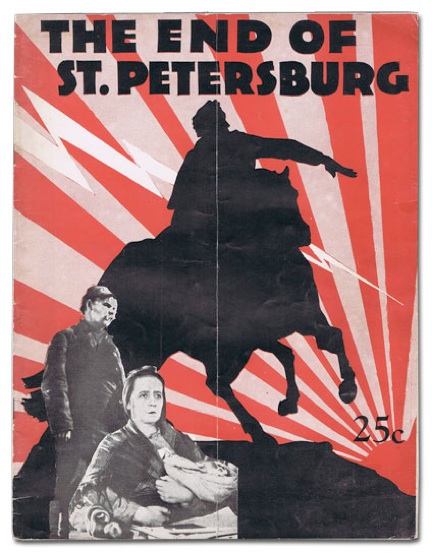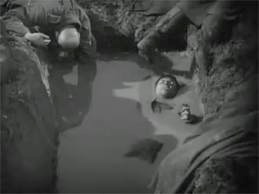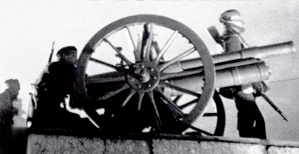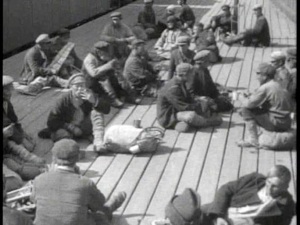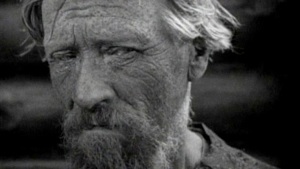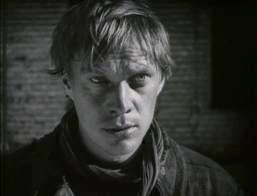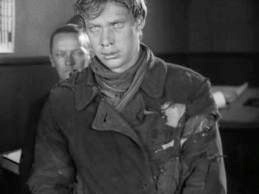12. Pudovkin 2
Readings
Pudovkin: Film Technique
Lecture
Zabel: On Pudhovkin
Discussion:
Make your entries for this session in the Discussions page of our Blackboard Site
Film
Pudovkin: The End of St. Petersburg (1927)
A peasant in rural Russia comes to St. Petersburg to escape absolute poverty and find work at the outbreak of the First World War. He comes to stay with his friend, a Bolshevik worker who has organized a strike at his factory. The peasant betrays his friend to the factory's greedy management, leading to the arrest of the striker. Feeling remorseful at his actions, the peasant attempts to plead for his friend’s freedom, but the situation escalates and he is imprisoned without trial and sent to fight in the war. After returning from the front, the peasant joins the revolutionary fight along with the Bolshevik worker.
Pudovkin’s film was commissioned for the tenth anniversary of the Revolution, as was Eisenstein’s October, and is therefore often considered alongside it. Along with Pudovkin’s other two films concerning the events of the Revolution, Mother and Storm Over Asia, The End of St. Petersburg features Pudovkin’s particular montage aesthetic, which focused on logically connected images and features psychologically developed characters, as opposed to Eisenstein’s more disruptive montage style. Despite the higher level of accessibility, however, Pudovkin’s film was much less popular than his previous hit Mother and received mixed notices from critics.
-
-Vance Kepley, Jr. The End of St. Petersburg (London: I.B. Tauris & Co. Ltd., 2003) 105.
Director: Vsevolod Pudovkin
Writer: Nathan Zarkhi
Stars: Vera Baranovskaya, Aleksandr Chistyakov and Ivan Chuvelyov
Year: 1927
Production Company: Mezhrabpom-Rus

